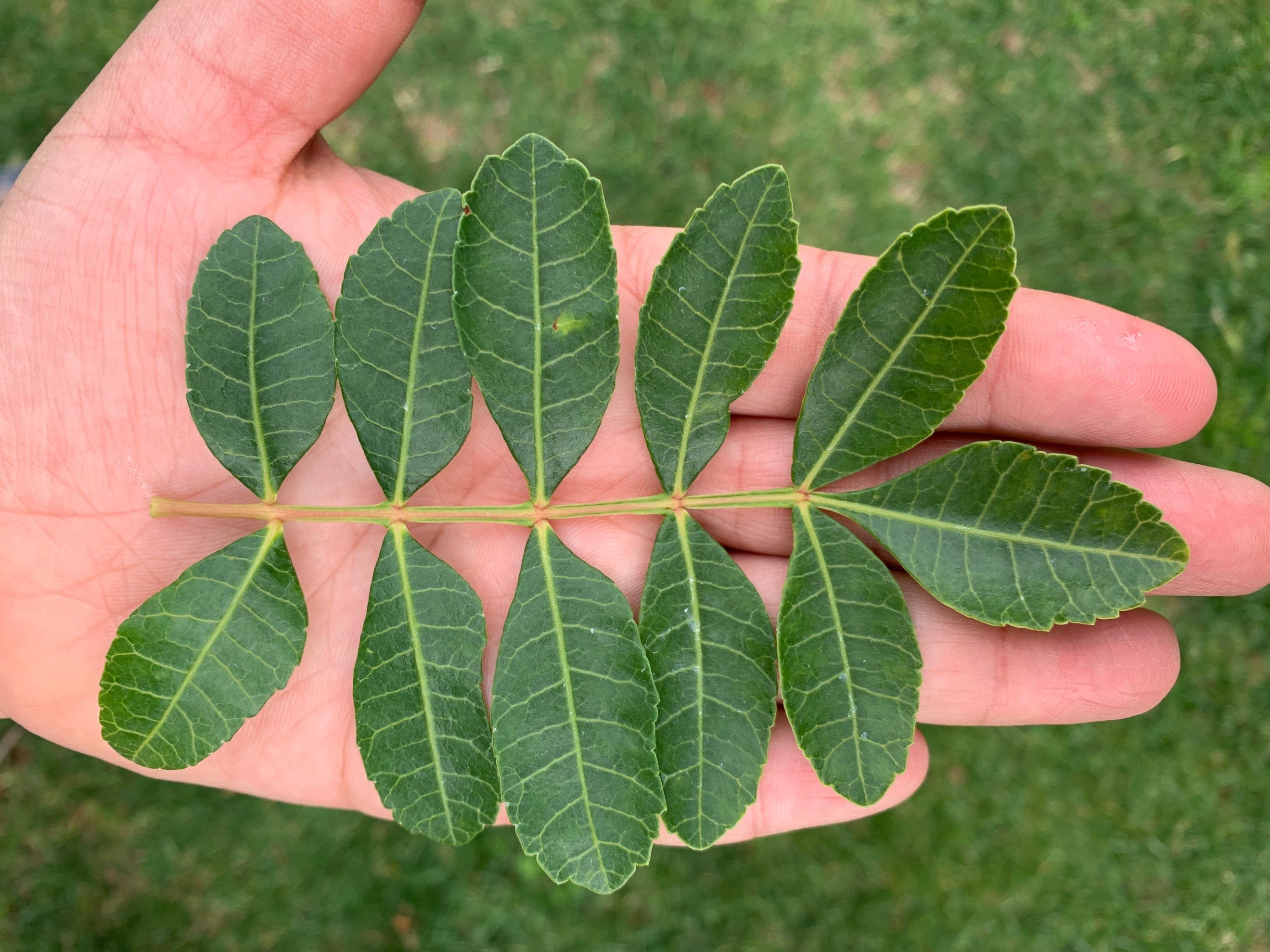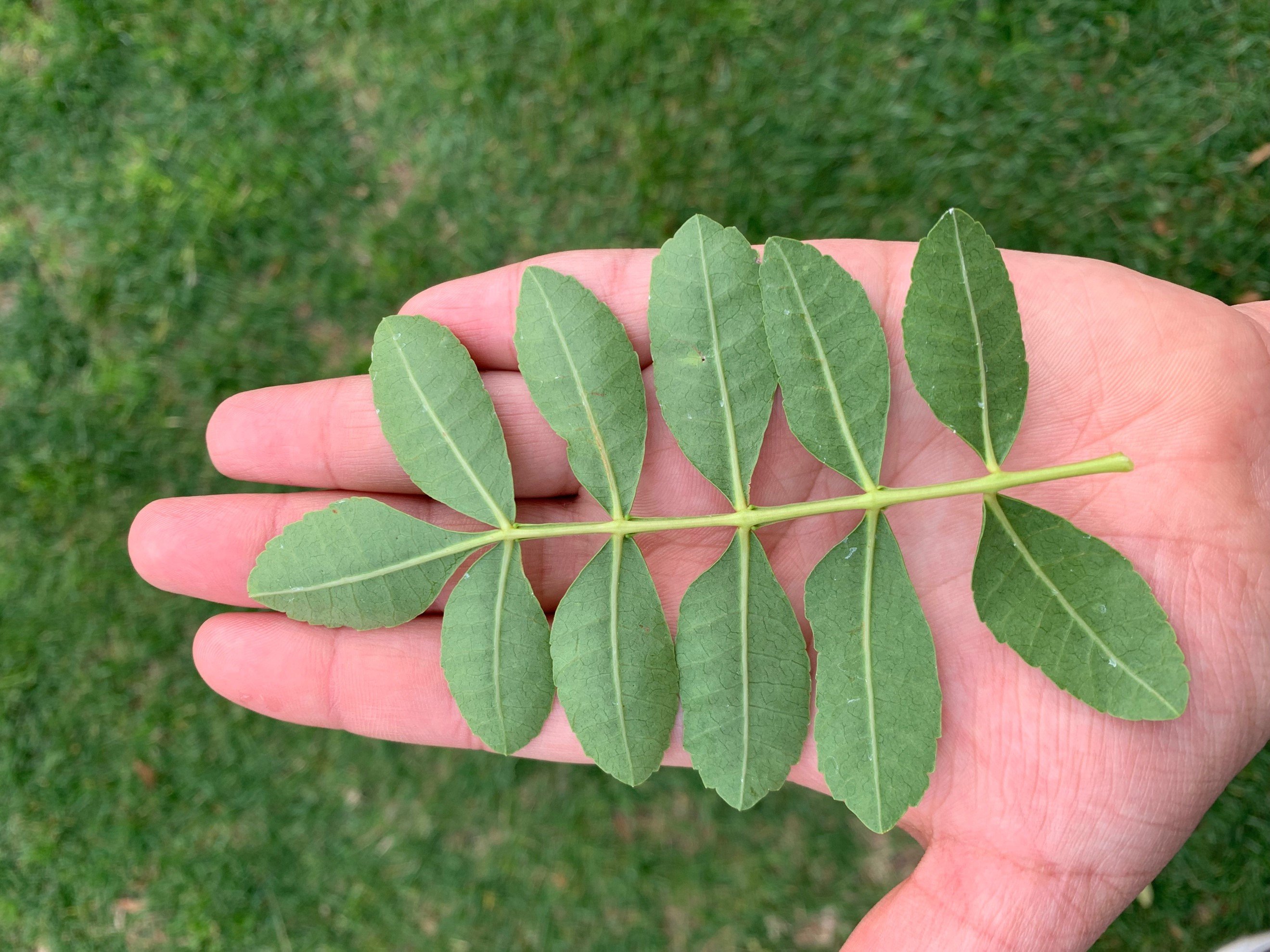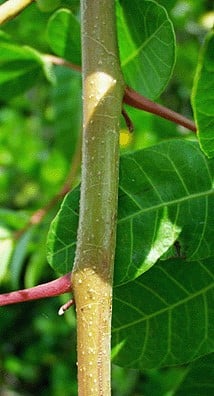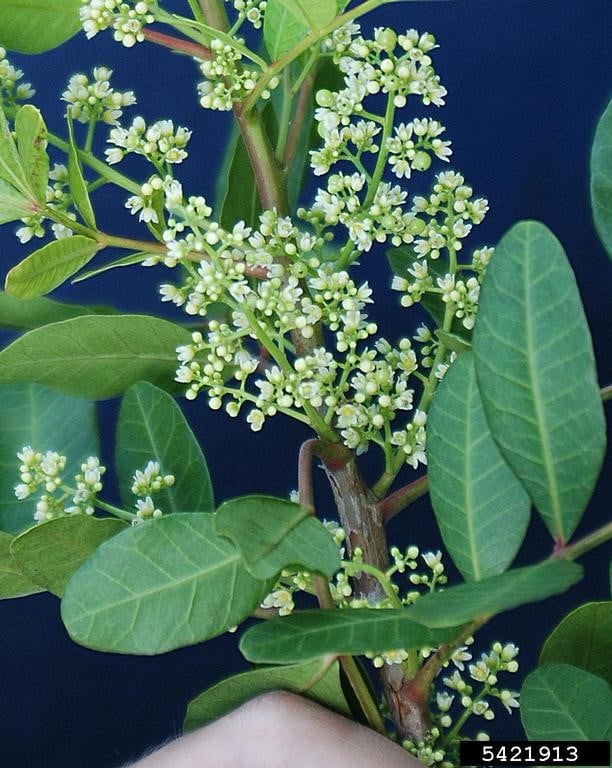University of Redlands Emergency Alert System
Alert Received: . For more information, visit: https://www.redlands.edu/alert/
University of Redlands
- Home
- Trees
- Species Accounts
- Brazilian Pepper
Common Name: Brazilian Peppertree
Scientific Name: Schinus terebinthifolius
Family: Anacardiaceae
Identification
Habit: The Brazilian Peppertree is a small tree or shrub that invades natural and distributed areas in Hawaii, Florida, Texas, and California5. These small trees reach approximately thirty feet in height at maturity and have a life span of around 30 years. They commonly grow in wide range of hydrologic conditions and in areas of secondary succession as a pioneer species6. The Brazilian Peppertree has a good resilience for shade and an extremely poor resilience for cold temperature making it restricted to invading only in warmer southern California areas10.
 Figure 1 Brazilian Peppertree. Taken by: Cheyenne Walser
Figure 1 Brazilian Peppertree. Taken by: Cheyenne Walser
Leaves: The leaves on the Brazilian Peppertree usually alternate in pattern (Figure 2). Brazilian Peppertree leaves are dark green, 1-2 inches long, and slightly toothed along the leaflet margins. The leaves are pinnately compound meaning the “leaflets are attached along an extension of the petiole called a rachis; there is a terminal leaflet and therefore an odd number of leaflets”8. The leaves of the Brazilian Peppertree have a strong scent of pepper or turpentine when crushed.
 Figure 2 Top of a Brazilian Peppertree’s leaf. Taken by: Cheyenne Walser
Figure 2 Top of a Brazilian Peppertree’s leaf. Taken by: Cheyenne Walser
 Figure 3 Bottom of a Brazilian Peppertree’s leaf. Taken by: Cheyenne Walser
Figure 3 Bottom of a Brazilian Peppertree’s leaf. Taken by: Cheyenne Walser
Twigs & Bark:
The twigs of the Brazilian Peppertree are a yellow-green color. The twigs are v-shaped and have a smooth texture. The bark of this tree is initially smooth with a gray/brown color. During maturity the bark becomes rough and the splits turn a red/brown color11. Figure 4 A close up of the twig on a Brazilian Peppertree11.
Figure 4 A close up of the twig on a Brazilian Peppertree11.
 Figure 5 Close up of Brazilian Peppertree’s bark. Taken by: Cheyenne Walser
Figure 5 Close up of Brazilian Peppertree’s bark. Taken by: Cheyenne Walser
Flowers & Fruits:
The flowers of the Brazilian Peppertree are clusters of small, white, 5-petaled flowers which measure approximately 2-3 inches long. The male and female flowers of the Brazilian Peppertree have similar characteristics. These flowers are in season from September through November.
 Figure 6 Twigs where clusters of white flowers form, taken by: Cheyenne Walser.
Figure 6 Twigs where clusters of white flowers form, taken by: Cheyenne Walser.
 Figure 7 Open cluster of flowers7.
Figure 7 Open cluster of flowers7.
The berries of the Brazilian Peppertree are clusters of glossy fruit that appear green initially. At maturity the berries of this tree become bright red with dark brown seeds which measuring 0.3mm in diameter. These fruits ripen by December in Southern California.
 Figure 8 Red berries of the Brazilian Peppertree9.
Figure 8 Red berries of the Brazilian Peppertree9.
Where It’s From
Native Range: These trees can be found in Argentina, Brazil, and Paraguay. Where the Brazilian Peppertree is invasive it invades multiple habitats including old fields, forests, hammocks, ditches, and wetlands. This tree forms dense thickets that displace native vegetation. The Brazilian Peppertree is native to South America and was introduced into the United States beginning in the 1840’s5.
 Figure 9 The native range map of the Brazilian Peppertree3.
Figure 9 The native range map of the Brazilian Peppertree3.
Ecological notes:
The Brazilian Peppertree has a rapid growth and reproduction rate as it not only produces many seeds but also can endure harsh resource conditions. It has the ability to withstand floods, fires, droughts and re-sprouts quickly after being cut. This aggressive weed displaces native plants in Florida where it is considered the most invasive plant species1.
What we use it for
The Brazilian Peppertree is most commonly used in the field of medicine. The extract of the Brazilian Peppertree’s berries has recently been found to disrupt the signaling among methicillin-resistant Staphylococcus aureus bacteria. The leaves of the Brazilian Peppertree are most commonly known to be used as an antiseptic and anti-inflammatory treatment for wounds and ulcers. Some parts of the tree can also be used as a treatment for urinary infections as well as respiratory infections4.
References
Biographers:
Cheyenne Walser '21 & Lindsey Hollifield ‘21, BIOL 338: Evolution, Ecology, & Behavior, Fall 2019